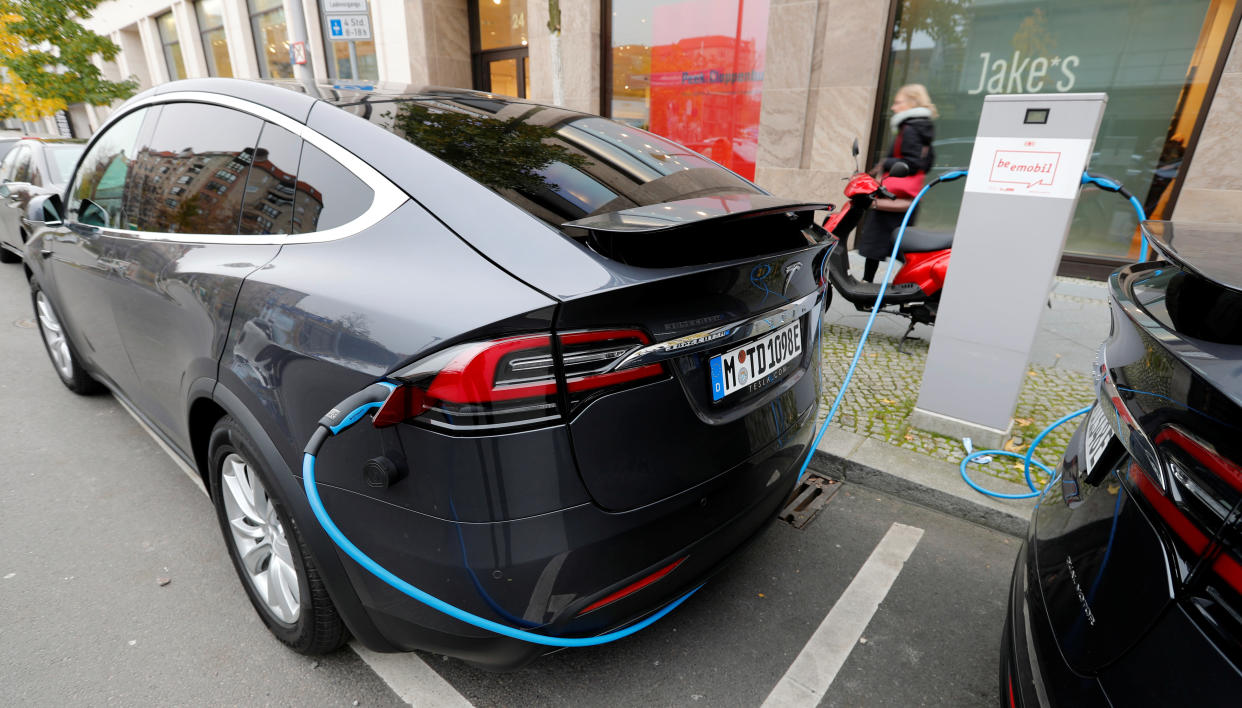Surging gas prices are pummeling food delivery workers [Video]
After many became essential workers during the pandemic, food delivery gig workers are particularly vulnerable again amid high gas prices.
“We, especially right now, are seeing a lot of pain at the pump for a lot of these gig workers who are doing food deliveries or who are doing grocery shopping or who are doing driving,” UNC-Chapel Hill Assistant Professor Alexandrea Ravenelle told Yahoo Finance Live (video above).
The national average for gas prices stands at $4.32 a gallon, according to AAA. California maintains the highest average in the nation at $5.72 per gallon, with several regions in the state temporarily exceeding $6.00 after the Russia-Ukraine war shocked oil markets.
On Friday, Uber announced it would add a temporary surcharge for users of the app to help drivers offset rising gas prices, though drivers are still responsible for a majority of the cost of fuel.
According to Ravenelle, the author of “Hustle and Gig,” spiking gas prices compounded by the cuts taken by employers from each completed job are eroding profits for food delivery and rideshare drivers.
“Drivers were already being left with a tiny fraction of the fares. It’s not unusual for 30%, 40%, even 50% of the cost of a ride to go to the company,” Ravenelle said. “You know, most of us feel pain at the pump maybe once or twice a week when we fill up our tanks. But for rideshare drivers and for delivery workers, that pain pump might happen daily or even several times a day.”
As a result, some gig workers have been driven towards extravagant alternatives rather than footing higher gas bills.
“I’ve spoken to drivers that have actually found it’s cheaper, even before this big increase, to rent a Tesla for rideshare, rather than pay for gas,” Ravenelle said.

Classifying gig work during the pandemic
There is also an ongoing battle over how to classify gig workers that is part of the gas hike context.
Hoping to oust unionization efforts, companies like Uber (UBER), Lyft (LYFT), and DoorDash (DASH) have turned to lobbying groups to advocate for legislation like California’s Proposition 22.
Passed in 2020 and then repealed the following year, Prop. 22 recognized gig workers as independent contractors, limiting the types of benefits they would otherwise receive under full-time employee status. New York City also passed legislation in September 2021 to reform working conditions for gig workers and protect them from too-low wages.
Speaking on a lobbying group’s recent $1 million ad campaign funded by rideshare and food delivery companies, Ravenelle noted: “You can’t help but think that if you’ve got a million dollars to put towards this, maybe you’ve got a million dollars to put towards paying your workers a little bit more, you know?”
Ravenelle also emphasized the fact that these companies’ leaders are not “being paid as independent contractors, they’re being paid as employees.”

Instacart “had a portion of their workforce that was working as gig workers and another portion that was being paid as W-2 employees,” Ravenelle added. “The classification as a W-2 worker does not actually prevent any type of flexibility. It just means that you receive additional protections so that you qualify for workers’ comp and you qualify for unemployment and you qualify for things like minimum wage.”
Previous Bureau of Labor Statistics surveys from 2019 have estimated there to be over 57 million gig and freelance workers in the U.S. comprising over a third of the 155 million American workers.
And that figure grew during the pandemic. A Pew Research study published in December 2021 indicated 9% of U.S. adults participated or are currently participating in the gig economy in recent years, and nearly a third are using gig work as their main source of income.
But even with noticeable growth in the gig economy during this period, many of the available protections for these types of workers still fell through the cracks.

“During the pandemic, we saw that certain gig work was much more vulnerable to the pandemic,” Ravenelle said. “So for instance, individuals who were doing TaskRabbit, who were doing home cleaning, chefs who were cooking in people’s private homes, those individuals very much found themselves without work.”
Ravenelle added that “although there was unemployment, in many cases unemployment wasn’t originally set up for them. And so even with the CARES Act and PUA [Pandemic Unemployment Assistance], it took them months in order to start getting unemployment funds.”
She also explained that while there was an increase in the demand for food delivery workers during the pandemic, some of those jobs displaced other workers.
Furthermore, sectors that rely on gig work had already been staring down the barrel of innovation prior to COVID-19 with tech developers teasing examples of automation across various industries. The backdrop of surging gas prices may even help make the case for some of these innovators, such as Serve Robotics, which hopes to employ sidewalk delivery robots to reduce carbon emissions and overall traffic safety in cities.
“So it’s a constantly moving challenge, I would say,” Ravenelle stated.
Luke is a producer for Yahoo Finance. You can follow him on Twitter @theLukeCM.
Follow Yahoo Finance on Twitter, Facebook, Instagram, Flipboard, LinkedIn, and YouTube




.jpeg?width=682&height=455&name=AdobeStock_295048993%20(1).jpeg)

